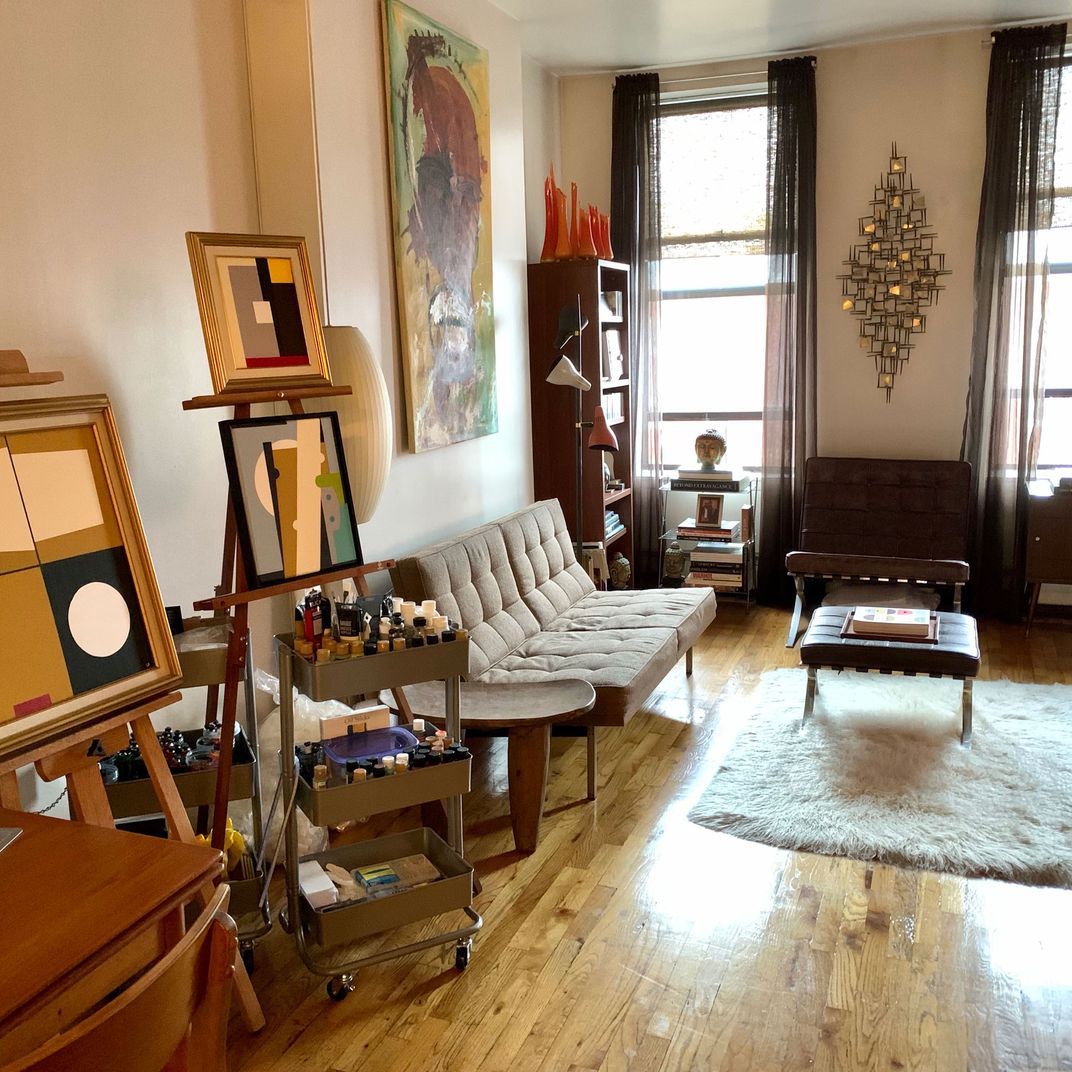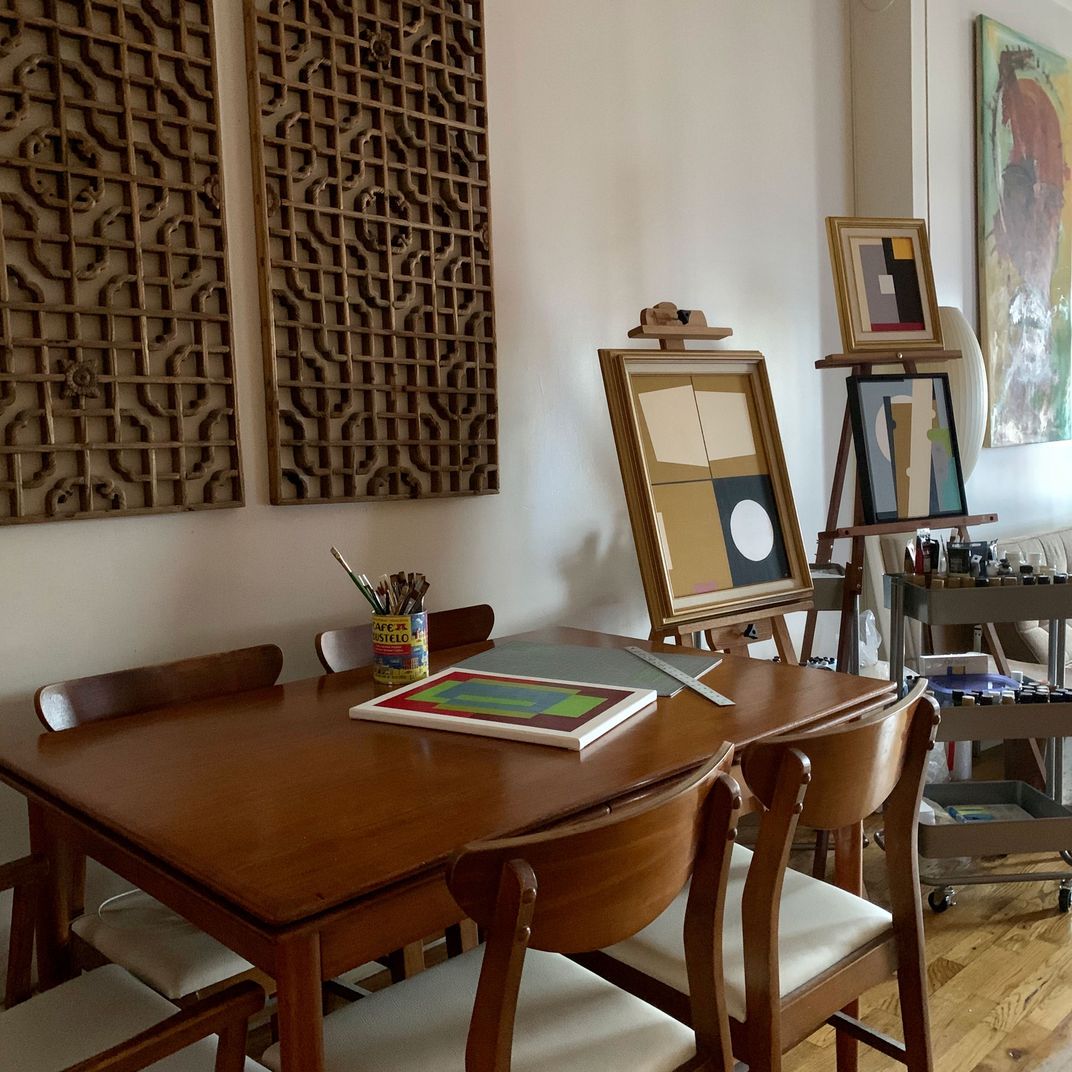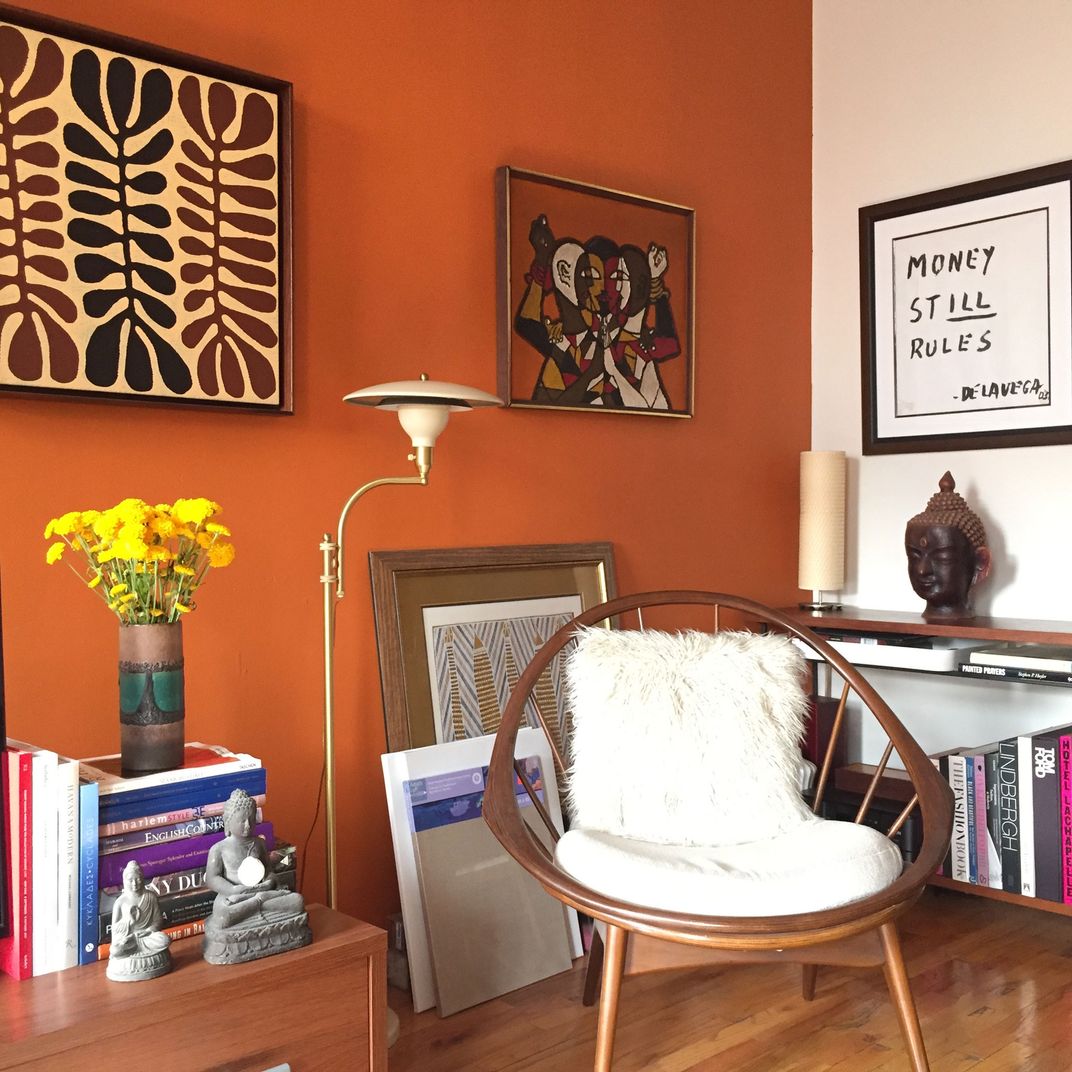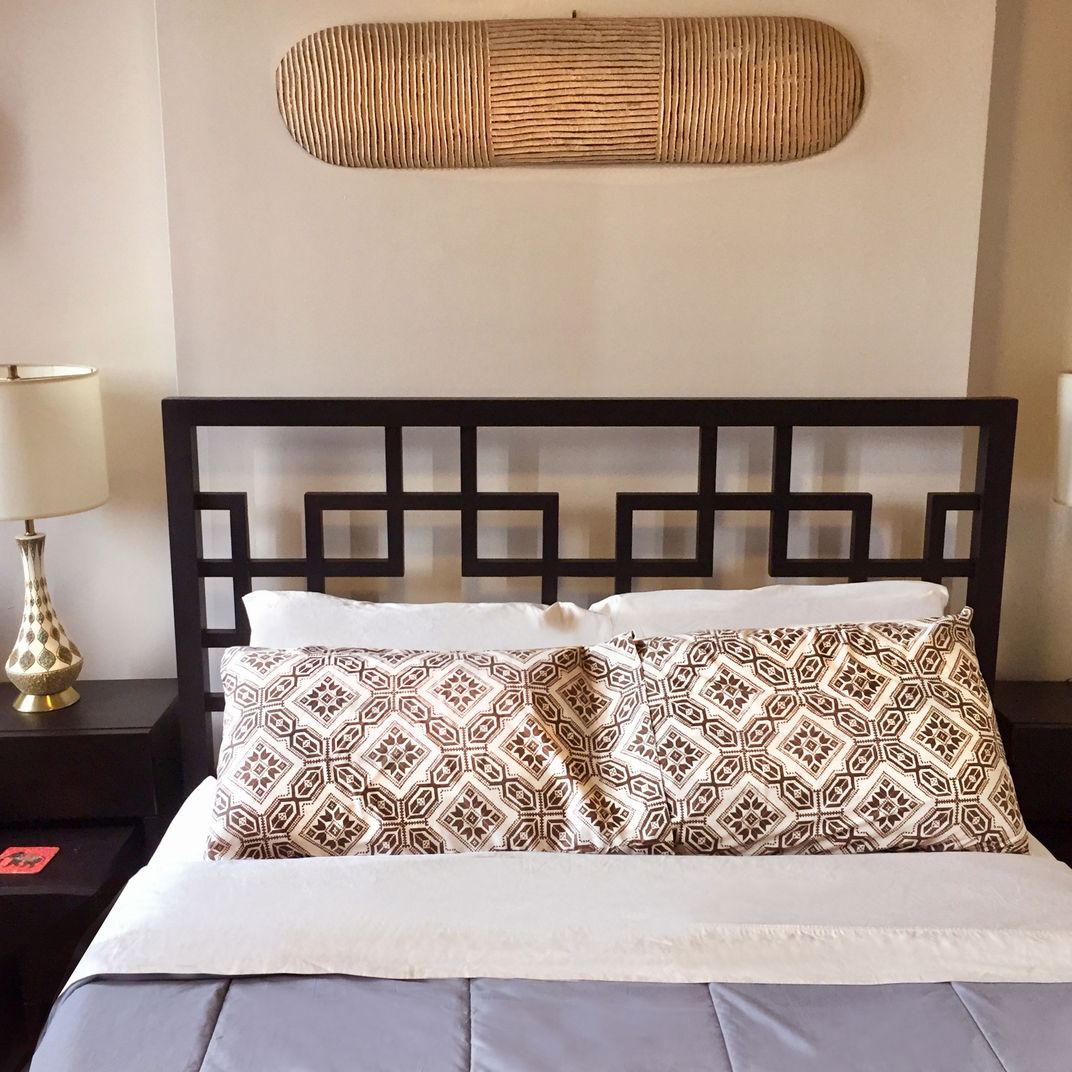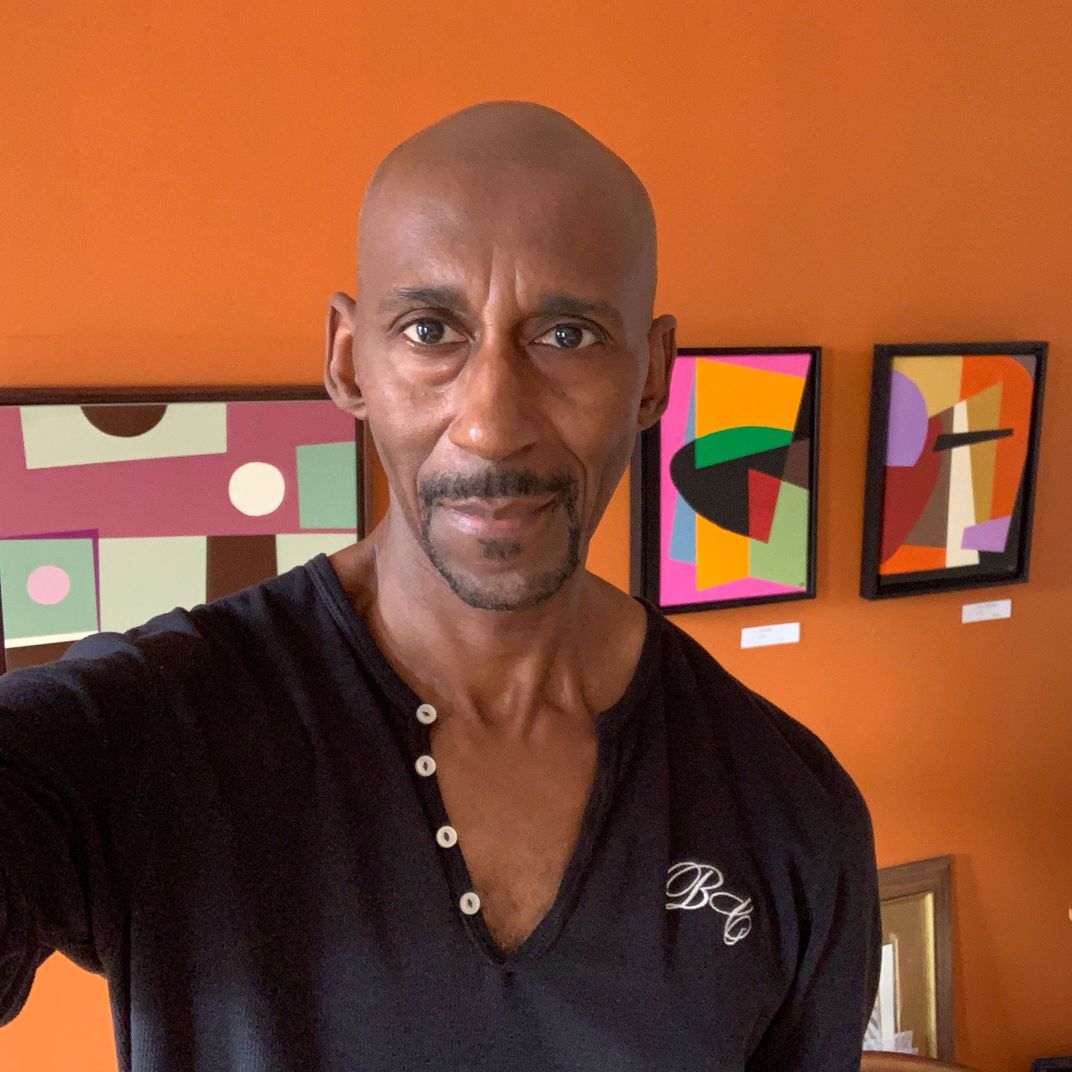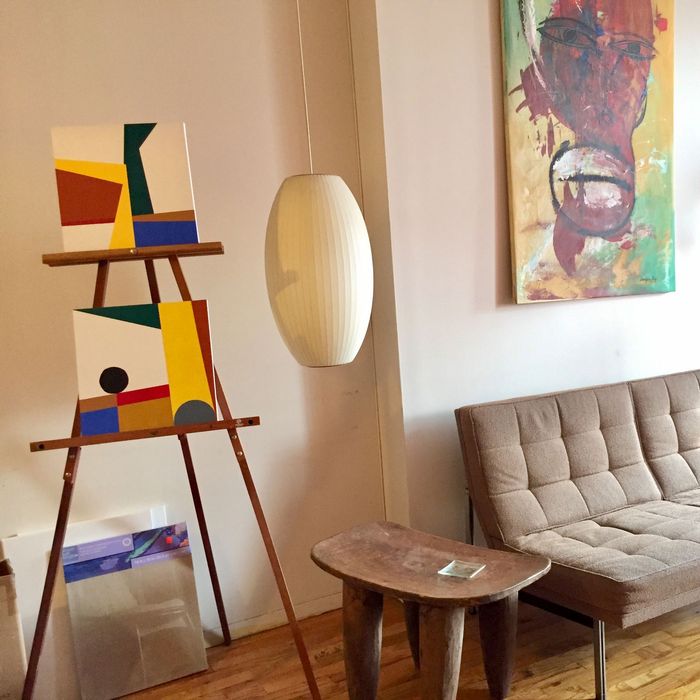
I first got to know Larry Bentley in the late 1990s, when he was the manager and maître d’ of the members dining room room at the Metropolitan Museum of Art, but I hadn’t known he was an artist himself until recently. To be fair, he hadn’t known either: He knew he could draw, but he had never tried to paint — “not even paint by numbers,” he tells me, laughing, after I ask him to send photographs of the central-Harlem one-bedroom apartment where he has lived for 20 years.
Bentley grew up in Jacksonville, Florida, where he played the violin and wanted a life in the arts. He studied architecture at Ohio State University before moving to New York City, where he lived in the East Village before Harlem.
Bentley was working at Sotheby’s as a client-services representative when the pandemic hit. “I knew that I was going to be furloughed,” he recalls. He decided to use his time off to teach himself to paint. “I just thought I would go to Michaels and Blick Art and get supplies after going online and researching the best canvas and acrylic paints and brushes. I figured if I messed up, no one would know because I didn’t tell anyone what I was going to be doing: If I mess up, I’ll just keep trying.” He’s back at Sotheby’s now.
If his color-block abstractions have a 1950s feel, that’s because he has a fascination with that era. “The inspiration for my work,” Bentley says, “comes from my love of all things mid-century modern and the great artists of that period.”
That extends to his décor as well. “Most of my furniture is mid-century,” he says. “My first main purchase when I moved into the apartment was the Barcelona chair and ottoman. I’ve always wanted one for as long as I can remember.”
Now, usually, his dining table is groaning under his paint supplies — as he says, “My dining table hasn’t seen a dinner party in over a year.” But he did recently host an open-studio event at his apartment, where he sold seven of his paintings. He is also selling his work on consignment at Belkind Bigi in Tarrytown.
“I love my floor lamp by MG Wheeler and the swing-arm lamp by Walter von Nessen. Both lamps were being thrown out by the Met’s editorial department. They were most likely there since the ’50s,” he says The metal sculpture between the windows was found at auction. Bentley’s collection of L.E. Smith Bittersweet vases in orange top off his bookcase by the window. “We had one in our family home when I was young, and they always remind me of home. I really love my George Nelson Bubble Lamp, which I got from Modernica in Soho along with the sofa.”
Bentley found his dining table at the 36th Street flea market, and he spied the dining chairs in the basement of a local Baptist church when he was making a clothing donation. He asked if he could buy them, and the church gave them to him instead. They were made in the ’50s by the Liberty Chair Company. The two Chinese carved-wood screens were found years ago at the 26th Street flea market.
The wall on the other side of the living room is painted orange, highlighting Bentley’s prized “Hoop Chair” by Ib Kofod-Larsen for Selig Furniture in Denmark. The two pieces hanging above are by the Aboriginal artist Mitjili Napurrula, whose works are in the collection of the National Gallery of Australia. The artist James De La Vega painted Money Still Rules for Bentley on a studio visit.
“The masks in the bedroom,” Bentley says, “were purchased from a dear friend, Rodney Terich Leonard, a published poet who was looking to offload some of the many, many African masks he collects.” The carved-wood shield above the bed was found at a flea market.
A self-portrait of Bentley in his home/studio/gallery.
“I love my floor lamp by MG Wheeler and the swing-arm lamp by Walter von Nessen. Both lamps were being thrown out by the Met’s editorial department. They were most likely there since the ’50s,” he says The metal sculpture between the windows was found at auction. Bentley’s collection of L.E. Smith Bittersweet vases in orange top off his bookcase by the window. “We had one in our family home when I was young, and they always remind me of home. I really love my George Nelson Bubble Lamp, which I got from Modernica in Soho along with the sofa.”
Bentley found his dining table at the 36th Street flea market, and he spied the dining chairs in the basement of a local Baptist church when he was making a clothing donation. He asked if he could buy them, and the church gave them to him instead. They were made in the ’50s by the Liberty Chair Company. The two Chinese carved-wood screens were found years ago at the 26th Street flea market.
The wall on the other side of the living room is painted orange, highlighting Bentley’s prized “Hoop Chair” by Ib Kofod-Larsen for Selig Furniture in Denmark. The two pieces hanging above are by the Aboriginal artist Mitjili Napurrula, whose works are in the collection of the National Gallery of Australia. The artist James De La Vega painted Money Still Rules for Bentley on a studio visit.
“The masks in the bedroom,” Bentley says, “were purchased from a dear friend, Rodney Terich Leonard, a published poet who was looking to offload some of the many, many African masks he collects.” The carved-wood shield above the bed was found at a flea market.
A self-portrait of Bentley in his home/studio/gallery.
More Great Rooms
- The Selby’s New Book About Creatives With Kids at Home
- ‘If I Had to Leave This Place, I Would Probably Leave New York’
- I’ll Never Forget the Apartment Gaetano Pesce Did for Ruth Shuman



